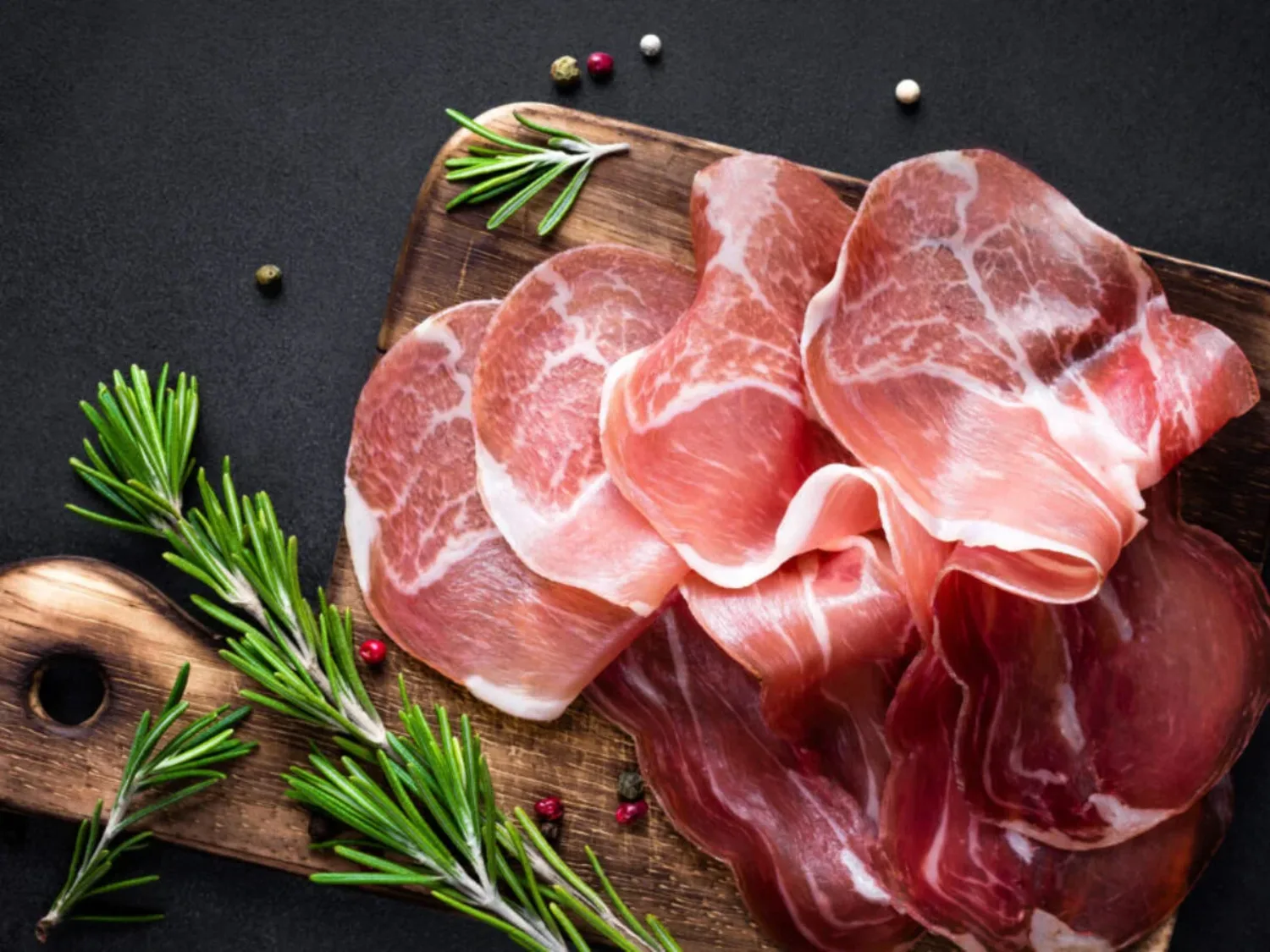
Prosciutto
Dry-cured ham served thinly sliced, known for its delicate flavor and silky texture.
Ingredients
- •Pork leg
- •Sea salt
Instructions
Curing
Salt the meat and let it cure
Aging
Age in controlled conditions for proper development
Prosciutto, the crown jewel of Italian cured meats, is a dry-cured ham that transforms a humble pork leg into a delicacy through time-honored traditions and patience. This thinly sliced meat is prized for its silky texture, delicate pink color, and complex sweet-salty flavor that melts in your mouth.
The art of making prosciutto dates back to pre-Roman times, with the most famous varieties being Prosciutto di Parma PDO from Parma and Prosciutto di San Daniele PDO from the Friuli region. Each region's unique climate and traditional methods contribute to distinct characteristics in the final product.
The making of prosciutto is deceptively simple yet requires immense skill and precision. It begins with selecting high-quality pork legs, which are carefully salted and left to cure for several weeks. The meat then undergoes a long aging process, typically ranging from 1 to 3 years, during which it develops its characteristic flavor and aroma under strictly controlled temperature and humidity conditions.
While the traditional recipe remains unchanged for centuries, modern producers must adhere to strict PDO (Protected Designation of Origin) regulations that govern everything from the pig breeds used to the specific geographic areas where production can occur. The only ingredients allowed are pork and sea salt - no artificial preservatives or additives are permitted.
In Italy, prosciutto is traditionally served as part of an antipasto platter, often paired with melon, figs, or fresh mozzarella. It's also delicious wrapped around grissini (breadsticks), incorporated into pasta dishes, or served atop pizza after cooking. The key to serving prosciutto is to slice it paper-thin to fully appreciate its delicate texture.
From a nutritional perspective, prosciutto is high in protein and contains beneficial minerals like iron and zinc. However, due to its high sodium content from the curing process, it should be consumed in moderation, particularly by those watching their salt intake. Despite being cured, prosciutto is generally gluten-free and contains no added preservatives, making it a relatively clean choice for charcuterie enthusiasts.
